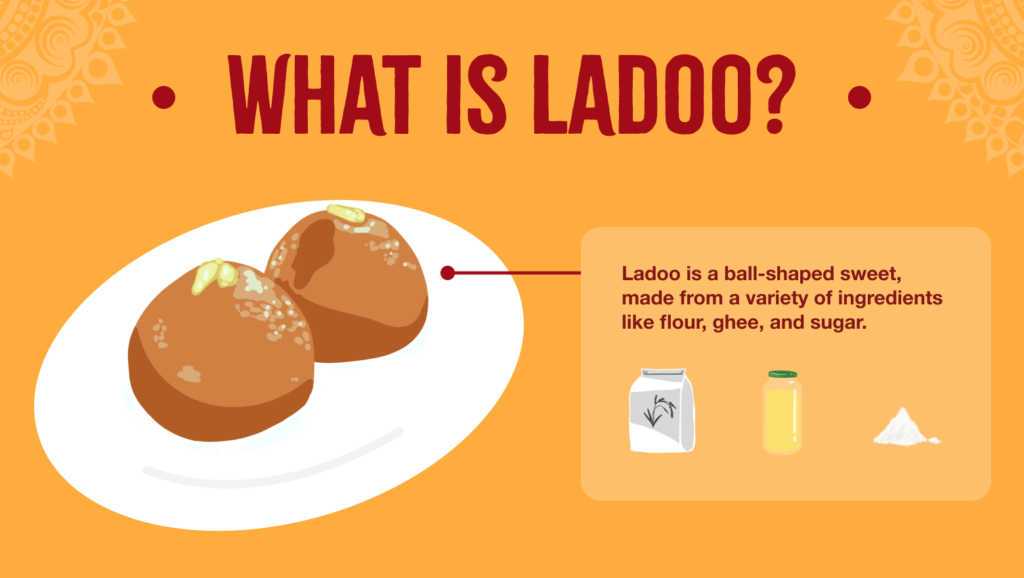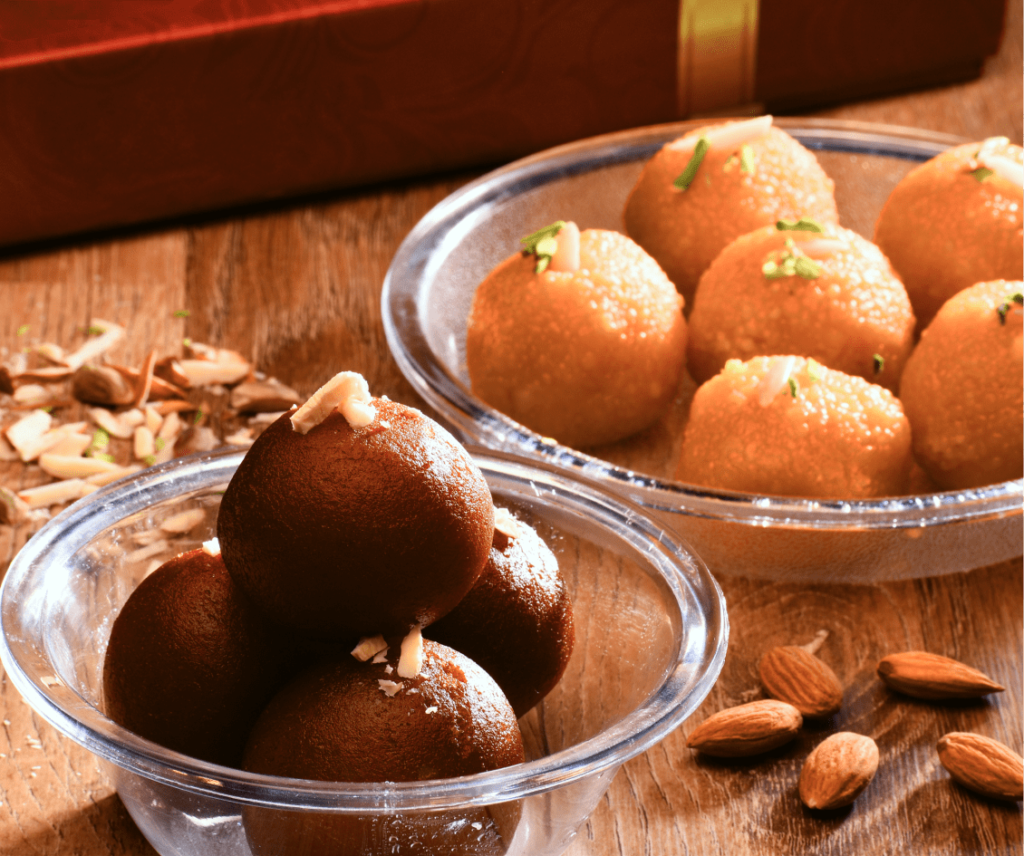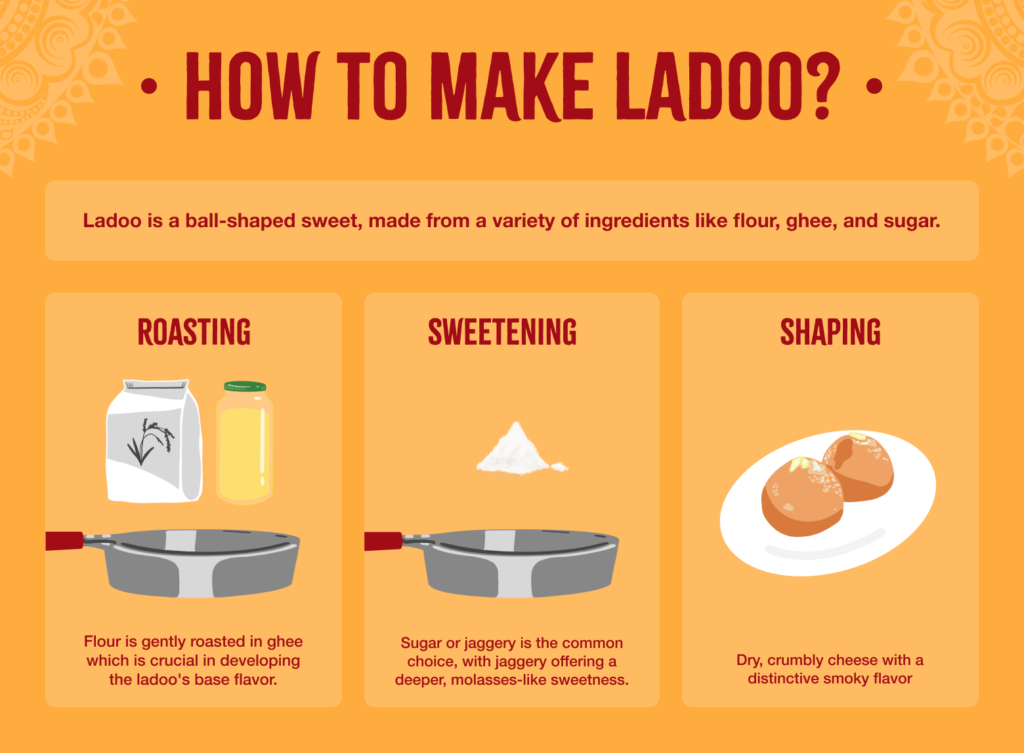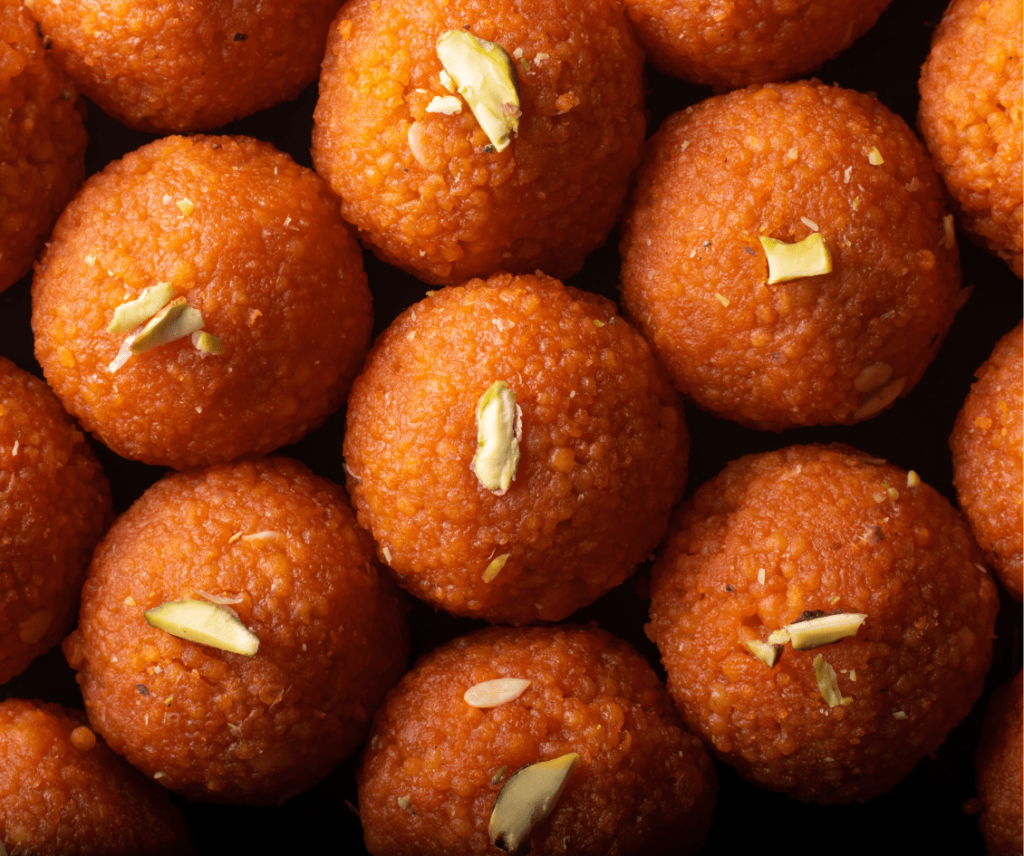What is Ladoo?
Let’s be honest— if you’re a fan of Indian cuisine, you’re a fan of sweets.
Ladoo sits prominently among these, a classic Indian dessert. At its core, ladoo is a ball-shaped sweet, traditionally made from a variety of ingredients like flour, ghee (clarified butter), and sugar.
Each region in India has its version, incorporating unique ingredients and flavors – from the nutty and rich Besan Ladoo made with gram flour to the vibrant and fragrant Boondi Ladoo, created from tiny, fried chickpea flour balls soaked in syrup.
In this article, we’ll guide you through the different types of ladoo, their unique tastes and textures, the nutritional aspects of these delightful sweets, and how you can recreate these flavors in your own kitchen.

What is “Laddu”? Variations of Ladoo
The term “Laddu” or “Ladoo” broadly refers to any sweet ball-shaped treat in Indian cuisine. It encompasses a wide range of sweets, including Besan Ladoo, Rava Ladoo, and Motichoor and Boondi Ladoos. Each type of laddu offers a different flavor and texture experience, making them versatile and widely cherished across India.
Ladoos, much like the diverse regions of India, come in an array of flavors and textures. While the basic process of making ladoos is largely the same, the regional ingredients and methods give each their own identity.

Besan Ladoo
A popular North Indian sweet, primarily a round ball made from roasted gram flour, sweetened and held together with ghee.
Boondi Ladoo
A festive sweet made of small, fried chickpea flour balls, bound together in a sweet syrup, recognized for its moist and spongy texture.
Motichoor Ladoo
Motichoor Ladoo is distinguished by its especially tiny, pearl-like fried chickpea flour balls soaked in sugar syrup, which offer a fine, melt-in-your-mouth texture.
Coconut Ladoo
A simple sweet primarily formed from grated coconut and sweetened with either sugar or condensed milk, known for its rich coconut flavor and dense texture.

Ladoo Recipe: How to Make Besan Ladoo
Ladoo making is a craft honed by generations of Indian cooks. This sweet’s basic form involves combining flour, ghee, and sugar, but the magic lies in the variations and subtleties of how these ingredients are brought together.
Key Ingredients
- Flour: The type of flour used significantly alters the ladoo’s character. Besan (gram flour) is common for its nutty flavor, while semolina (rava) offers a different texture and taste.
- Ghee: This clarified butter is essential for its rich aroma and acts as a binding agent.
- Sugar: Often in the form of powdered sugar or jaggery, it adds sweetness and helps in binding.
The Process
Follow along to learn how to make ladoo right from your own home.
Roasting
The first step, roasting, is crucial in developing the ladoo’s base flavor. Flour is gently roasted in ghee.
This process needs to be done patiently and under a watchful eye, as the flour can easily burn. The goal is to reach a color change that indicates the release of a nutty, aromatic fragrance.
Sweetening
Once the flour is roasted, sweeteners are added. Sugar or jaggery is the common choice, with jaggery offering a deeper, molasses-like sweetness.
This stage also involves the addition of flavor enhancers like cardamom or saffron. Cardamom adds a fragrant, citrusy note, while saffron brings in a subtle floral flavor and a beautiful golden hue.
These ingredients are mixed well to ensure even distribution throughout the dough.
Shaping
The final step in the ladoo-making process is shaping the mixture into balls. This is typically done while the mixture is still warm, making it easier to bind.
The size of the ladoos can vary, but they are usually made to fit comfortably in the palm of a hand. In some variations, additional ingredients like chopped nuts or raisins are added at this stage for extra texture and flavor.
More Sweets Like Ladoo
If you love ladoos, there are several other sweets you might enjoy:
Barfi
A dense, milk-based sweet often flavored with fruits, nuts, or spices. It’s typically cut into diamond or square shapes and has a fudge-like consistency.
Gulab Jamun
These are soft, spongy balls made from milk solids, fried and soaked in a sweet, fragrant syrup, often flavored with rosewater or cardamom.
Jalebi
A popular sweet made by deep-frying maida flour batter in pretzel or circular shapes, which are then soaked in sugar syrup. Jalebis are known for their bright orange or yellow color and crispy texture.
Halwa
Halwa is a dense, sweet confection commonly made with various ingredients like carrots, semolina, or lentils, cooked with ghee, sugar, and often enriched with nuts and spices.
Rasgulla
Originating from Eastern India, rasgullas are soft, spongy balls made from chhena (an Indian cottage cheese) and semolina dough cooked in a light syrup made of sugar.

Ladoos Outside of India: What is the Pink Ladoo Project?
Ladoos aren’t only common in India. In fact, In other parts of the world, ladoos are being used to challenge and transform gender norms.
Typically, the birth of a boy in South Asian communities has been celebrated by spreading sweets—usually laddoos. This practice, however, was not commonly extended to the birth of girls.
The Pink Ladoo Project is changing this tradition. It encourages families to celebrate the arrival of a girl by distributing pink ladoos. By doing this, the project aims to create a new tradition, all through the power of this little sweet!
Embrace the Sweetness with Sukhi’s
At Sukhi’s, we’re passionate about bringing you authentic and nutritious flavors like the laddoo. We offer recipes and blogs that will broaden your view of all-things Indian food.
For more sweets, explore our 7 Must-Try Indian Desserts or our Rice Pudding with Candied Ginger. Don’t stop licking your lips yet, discover all the uses of cinnamon and spice, and learn how to make our Chai Donuts.
We hope you enjoyed your deep dive into ladoo. Keep reading, exploring, and tasting!
No comments yet.